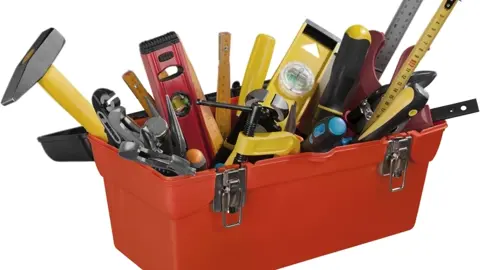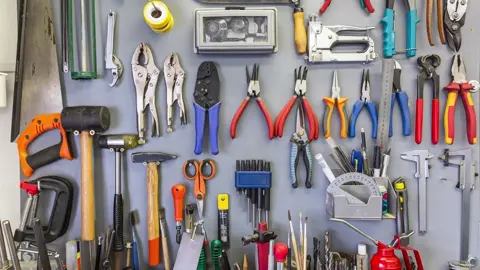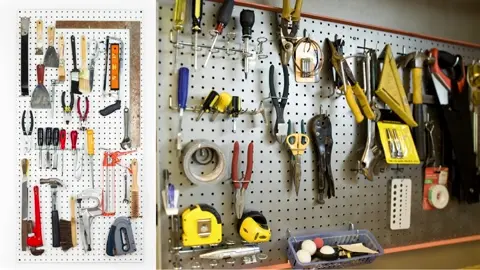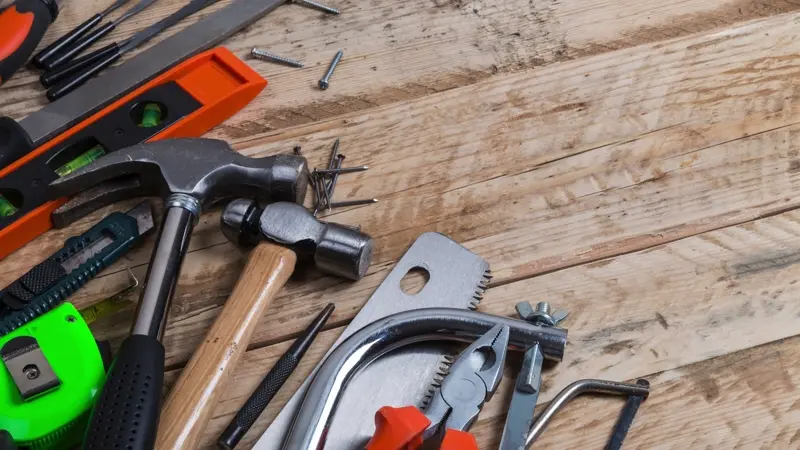An efficiently organized workspace significantly enhances productivity, stimulates creativity, and promotes overall peace of mind. A crucial aspect of establishing a well-ordered environment includes Organizing Tools in a tidy manner, ensuring quick and effortless accessibility when required. Regardless of the type of tools at hand – such as power tools, hand tools, or craft supplies – executing straightforward organization techniques can notably improve the effectiveness and functionality of your workspace.
Table of Contents

Unique Ways for Organizing Tools
An essential aspect of creating an effective workspace entails diligently organizing tools for effortless access during moments of high demand. Allow me to introduce a selection of professional strategies for classifying a diverse array of implements, such as power tools, hand tools, crafting supplies, and other comparable Organizing Tools, guaranteeing that establishing a systematic procedure becomes second nature to you.
To organize your tools effectively, you can adopt a variety of systems. One popular method is the 5S system from Lean management, which encompasses five steps: Sort, Set in order, Shine, Standardize, and Sustain. This approach promotes ongoing maintenance and orderly practices.
1. Conduct a Thorough Inventory Assessment
Initiate your tool organization process by meticulously examining and cataloging every tool and accessory in your collection. Engage in a thorough sorting exercise, actively identifying the tools that hold frequent utility for you and those that may be more suitable for relocation or disposal. This hands-on approach will provide a clearer vision of your inventory, paving the way to a more organized workspace.
2. Systematically sort your tools
Once you’ve taken stock of all your equipment, diligently separate your tools into well-defined groups based on their purpose or type – for example, distinguish between woodworking tools and painting supplies. This meticulous categorization process will pave the way for you to establish dedicated storage spaces tailored for each specific category, promoting efficiency and organization.

3. Take action by investing in suitable storage solutions
To create a well-organized workspace, actively seek out and invest in appropriate storage solutions. Explore various options such as toolboxes, pegboards, shelves, and drawer organizers, paying attention to the intricate details of each solution. Assess the unique characteristics of your work and tools to make an informed decision, opting for those storage options that not only meet your requirements but also effectively reduce clutter.
4. Label everything
Meticulously labeling every item streamlines the process of locating what you need in a flash and eliminates the frustration of fruitless searches during a project. Skillfully attach transparent, easy-to-read labels on drawers or containers, and ingeniously implement a color-coding system for various tool categories to ensure they instantly catch your eye.
5. Keep frequently used items close by
As you meticulously arrange your tools, prioritize the ones you frequently utilize by positioning them within arm’s reach around your dynamic workspace. This deliberate setup guarantees that essential implements are consistently within your grasp, eliminating the need to fumble through cluttered containers or disorganized drawers, ultimately saving precious moments and enhancing overall efficiency.
6. Utilize vertical space
Embrace the power of vertical space by creatively transforming walls or even the sides of workbenches into convenient storage spots for your tools. Maximize every inch with dynamic vertical storage solutions like adaptable pegboards or strong magnetic strips, exceptionally beneficial in compact workspaces where floor and counter space is scarce. Witness increased efficiency and orderliness as your tools find their organized homes, leaving you with a clutter-free and streamlined workshop.

7. Regularly declutter and maintain organization
Vigorously maintaining an immaculate organization system hinges on your dedication to upholding its structure. Integrate habitual clean-up sessions into your daily routine, ensuring that each tool returns to its designated spot once you finish using it. This unwavering commitment will not only preserve the arrangement of your tools but also create a pristine, efficient workplace that propels productivity.

Benefits of Organizing Workspace Tools
Organizing your workspace tools brings several benefits. It increases efficiency by reducing the time spent searching for tools, lowers stress levels by eliminating clutter, and can result in a more professional looking work area, which can positively impact client perceptions if your workspace is visible to clients. Moreover, a well-organized space can enhance creativity by reducing distractions and allowing your mind to focus on the tasks at hand.
How often should I reorganize my workspace?
The frequency of reorganization can depend on several factors such as the nature of work, the volume of tools used, and personal preference. A good rule of thumb is to reorganize your workspace whenever you find it difficult to locate tools or when clutter starts to accumulate. For some, this could mean a weekly tidy-up; for others, a monthly overhaul might suffice.
How do I prioritize which tools to keep within close reach?
Tools should be prioritized based on frequency of use and importance to the tasks you perform most often. Additionally, consider the flow of your work – tools used at the beginning of a task should be closer than those used at the end. A helpful method is to map out tasks step-by-step and organize based on this flow.
Can color-coding help in organizing my workspace?
Yes, color-coding is an excellent visual aid in an organizational system. It allows quick identification of tool categories or even urgency of tasks associated with certain colors (e.g., red for immediate attention). This system works well for people who respond strongly to visual cues.
What is the best way to deal with cables and cords in my workspace?
Cable management systems such as cable ties, clips, sleeves or channels can consolidate cords and keep them from tangling or cluttering the space. Ensure they’re labeled corresponding to their devices for easy identification. Wireless options can also reduce cord clutter if applicable.
Conclusion
A well-structured workspace is crucial for optimizing productivity and pleasure in any project. By incorporating these valuable suggestions for organizing tools, you will progress towards a clutter-free setting, allowing you to concentrate effectively on the tasks at hand. It’s critical to acknowledge that a tidy workspace not only assists in time management but also fosters a sense of achievement and mental wellness. By dedicating time to develop a specified workspace equipped with practical storage solutions, ergonomic considerations, and appropriate lighting conditions, an enhanced workflow can be accomplished.
Each individual may hold distinct preferences for their workspace; however, cultivating a routine for maintaining order will undoubtedly aid in effortlessly accomplishing projects, ultimately resulting in increased overall satisfaction within both personal and professional domains. Always remember, taking the initiative to revolutionize your environment can be the key to unleashing the full potential of your creativity and productivity.

